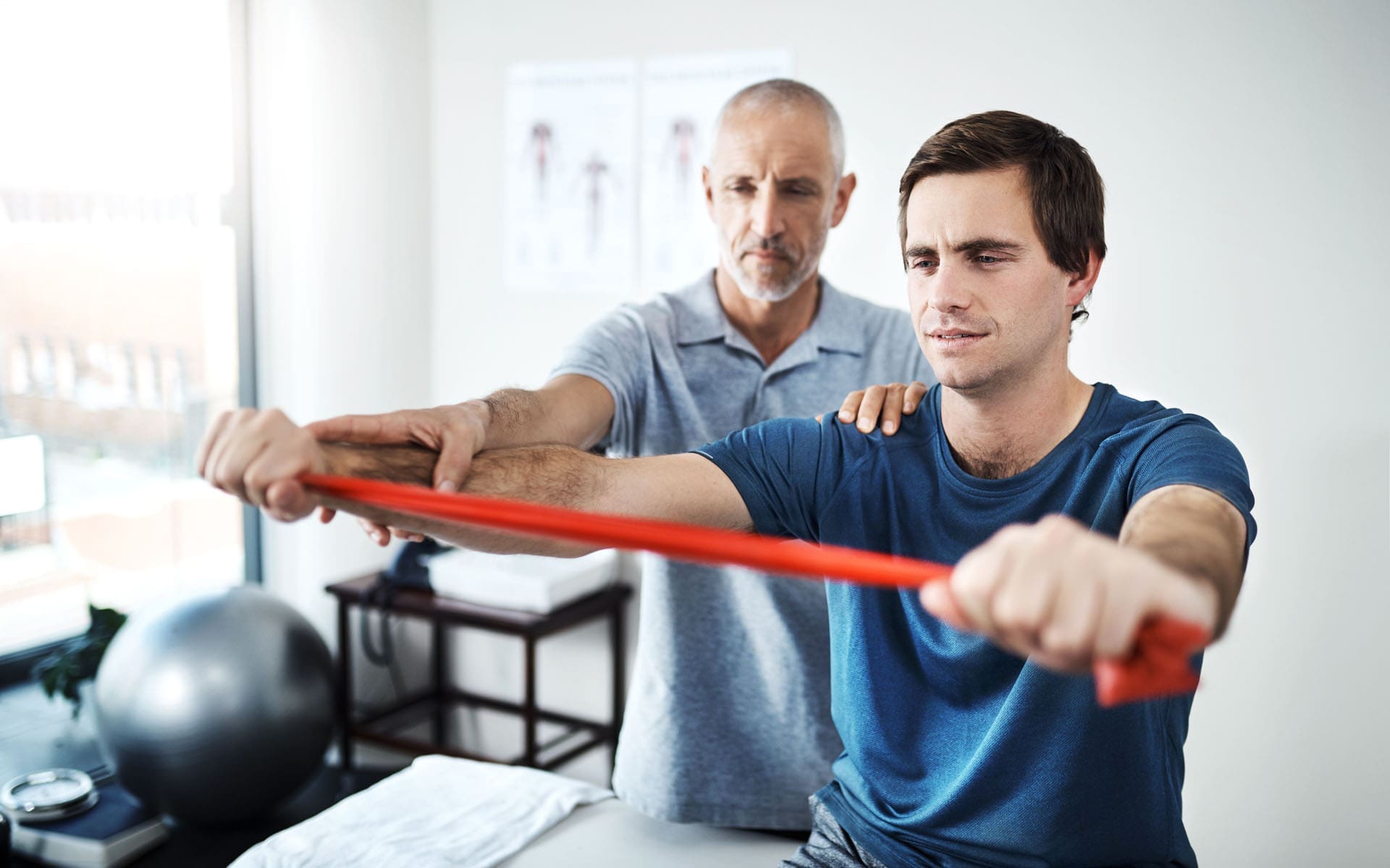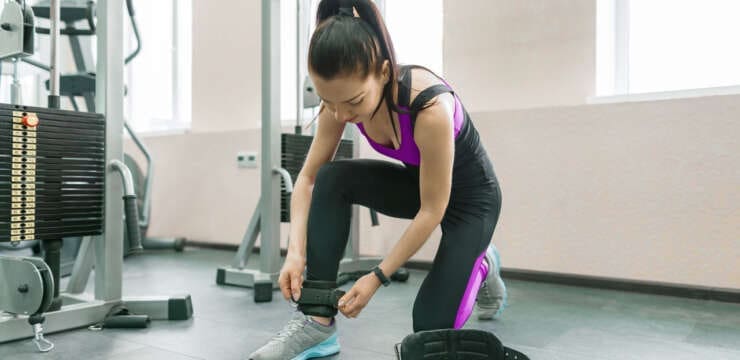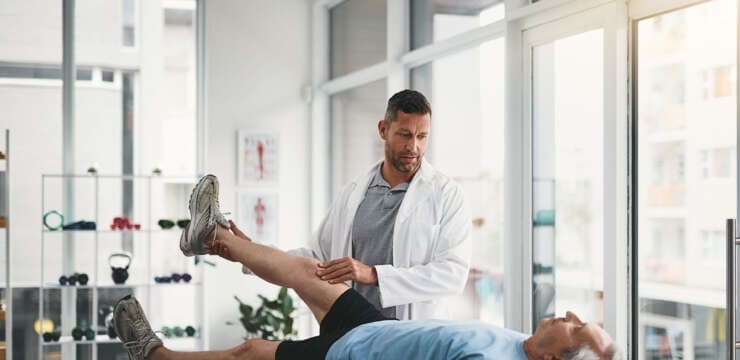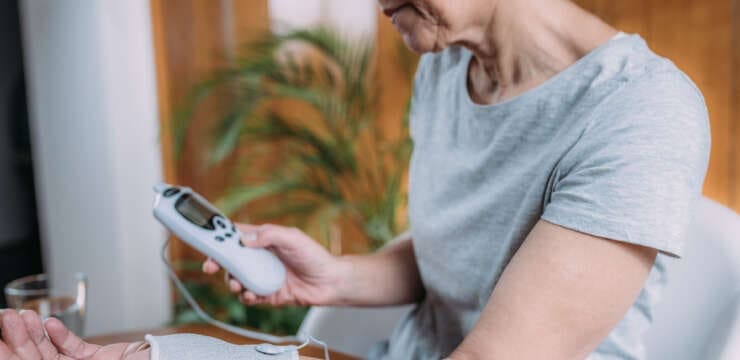
Table of Contents
Rehab Training After Head Injury (TBI): A Simple, Step-by-Step Guide to Get Moving, Thinking, and Balancing Again

What This Article Covers
-
The four pillars of head-injury/TBI rehab: aerobic, strength, balance/vestibular, and cognitive training
-
Sample exercise progressions and simple home setups
-
How to pace workouts to avoid flare-ups like headaches and dizziness
-
How integrative chiropractic care can help with neck alignment, headaches, dizziness, and posture during training
-
A 4-week starter plan you can bring to your care team
-
Safety checks, gear, and simple tracking tips
Head injuries and TBIs are often used together in this guide because many people use those terms the same way. Your team will tailor the plan to your exact diagnosis and stage of recovery.
The Big Picture: Why Training Works After TBI
Your brain and body learn through repetition and challenge. When you practice the right movements, senses, and thinking tasks, your nervous system forms new connections (neuroplasticity). That is how you rebuild strength, balance, and mental skills after a head injury. Well-built programs incorporate cardio, strength, balance, and cognitive exercises—and they progress gradually, with breaks, to help mitigate your symptoms. (NeuroPT Brain Injury SIG; ACSM guidance summarized in Physio-Pedia; Flint Rehab practical progressions). Neuropt+2Physiopedia+2
Clinical teams commonly recommend 20–40 minutes of low-to-moderate aerobic activity, 3–5 days per week, with added strength, flexibility, and balance work for people with a history of TBI—adjusted for symptoms and stage of recovery. (NeuroPT fact sheet; Physio-Pedia guideline summary). Neuropt+1
Pillar 1: Aerobic Training (Low Impact First)
Why
Cardiovascular exercise boosts blood flow, supports mood, and can improve attention and sleep quality. It also “primes” the brain for learning—many clinics pair light cardio before cognitive work. (Guideline summaries; concussion programs). Physiopedia+1
How to start
-
10–15 minutes at an easy pace: walking, recumbent bike, or elliptical if cleared.
-
Keep symptoms below a 3/10 rise from baseline. Stop if you get spinning, a severe headache, or nausea.
Level-up options
-
Add intermittent intervals: 1 minute at a slightly faster pace, 2 minutes at an easy pace.
-
Build up to 20–30 minutes, 3–5 days/week, as tolerated. (NeuroPT; ACSM guidance via Physio-Pedia). Neuropt+1
Pillar 2: Strength Training (Build the Base)
Why
After a head injury, deconditioning and stiffness in the neck and upper back are common. Strength training supports posture, walking stability, and daily tasks. (Physio-Pedia—therapeutic interventions). elpasochiropractorblog.com
Starter moves (2–3 sets of 6–12 reps, 2–3 days/week)
-
Sit-to-stand (use a chair) ? progress to squats
-
Rows with a band (anchor at doorknob height)
-
Wall push-ups ? table push-ups ? floor push-ups
-
Bridges for hips
-
Farmer carry with light weights for grip/core
Seated options from state wellness guidance include hip rotations, abduction/adduction, seated marching, lateral trunk bends, trunk extension, weight shifts, and heel/toe raises—great for early phases or flare-up days. (Illinois CMS Be Well TBI Recovery). CMS Illinois
Pillar 3: Balance & Vestibular Training (Steady the World)
Why
Balance and dizziness problems are common after TBI and concussion. Vestibular rehab utilizes exercises for the head, eyes, neck, and body to retrain your vestibular system. (Headway factsheet). headway.org.uk
Core drills
-
Tandem stance (heel-to-toe) near a counter; hold 20–60 seconds per side. (Flint Rehab). flintrehab.com
-
Staggered stance with eye tracking (follow your finger up/down/sideways). (Flint Rehab). flintrehab.com
-
Head turns with feet together (start next to a wall or sturdy chair). (Balance rehab examples). flintrehab.com
Headway offers 12 balance/dizzy exercises and stresses the importance of getting professional input; this is particularly crucial if symptoms worsen. headway.org.uk
Pillar 4: Cognitive Training (Make the Brain Work)
Why
Cognitive rehabilitation aims to rebuild attention, memory, processing speed, and executive skills, making daily life easier. (Barman et al., 2016). PMC
Simple ideas you can use at home
-
Use your non-dominant hand for routine tasks (brushing teeth, stirring, unlocking phone).
-
Novelty tasks: try a new recipe, route, or hobby once per week.
-
Brain games with rules: card sorting, chess/checkers (even giant chess), or app-based puzzles in short sets. (GreatSpeech; Krysalis activity list). Great Speech
Structured lists of home-friendly cognitive tasks are available from Great Speech and Flint Rehab. Start with simple tasks and gradually increase the difficulty. Great Speech+1
Many concussion programs pair ~30 minutes of light cardio before cognitive drills to enhance focus. Scale to your symptoms. cognitivefxusa.com
How to Pace, Progress, and Avoid Setbacks
-
Symptom rule: keep increases to no more than 2–3 points above your baseline.
-
10% rule: raise time or load by ~10% per week only if the prior week felt stable.
-
Alternating days: rotate cardio/balance with strength/cognitive days to give your system variety.
-
Deload weeks: every 3–4 weeks, cut volume ~30–40% for recovery.
People with TBI often face barriers like fatigue, transport limits, and fear of symptoms. Plan around these with shorter bouts, home setups, and caregiver help. (Physio-Pedia). Physiopedia
A 4-Week Starter Plan (Bring This to Your Team)
Safety first: get medical clearance. Use rails/counters for balance tasks. If you develop severe headache, spinning, worsening vision, faintness, or new neurological signs, stop and contact your clinician.
Week 1 – Reset and Learn
-
Cardio: 10–15 min easy walk or recumbent bike, 4 days/week
-
Strength: sit-to-stands 2×8, band rows 2×8, wall push-ups 2×8, bridges 2×8 (2 days/week)
-
Balance: tandem stance holds 3×20–30 sec each foot; eye-tracking in staggered stance 2×5 reps (3 days/week)
-
Cognitive: 10–15 min/day: non-dominant-hand tasks + 1 simple puzzle set (GreatSpeech/Flint Rehab ideas). Great Speech+1
Week 2 – Add Time and Variety
-
Cardio: 18–20 min total; optional 1-min brisk / 2-min easy intervals ×4
-
Strength: progress to 3×8–10; add farmer carry (light) 3×30–45 sec
-
Balance: narrow base ? full tandem; add gentle head turns in feet-together stance
-
Cognitive: 15–20 min/day; add dual-tasking (say months of the year backwards while doing heel/toe raises). (Illinois CMS list for heel/toe raises). CMS Illinois
Week 3 – Build Challenge
-
Cardio: 22–25 min; keep symptom rises ?3/10
-
Strength: introduce table push-ups, mini-squats (or continue chair squats), single-leg balance taps
-
Balance: staggered stance + eye tracking; begin gaze stabilization targets if guided by your clinician (vestibular rehab). headway.org.uk
-
Cognitive: 20 min/day; move from easy apps to rule-based games or short memory drills; keep sets brief and focused. (Flint Rehab cognitive progressions). flintrehab.com
Week 4 – Consolidate and Personalize
-
Cardio: 25–30 min, 3–5 days/week (goal zone for many programs). (NeuroPT; Physio-Pedia). Neuropt+1
-
Strength: 3×10–12; add light resistance bands for rows and squats
-
Balance: dynamic drills (tandem walk along a counter, weight shifts on foam or folded towel)
-
Cognitive: 20–30 min/day; add task switching (e.g., changing rules mid-game), light multitask combos (counting by 7s while doing sit-to-stand sets)
Home Exercise Setups That Work
-
Chair + doorway + countertop = safe strength and balance zone
-
Resistance bands = easy progression for rows, squats, and bridges
-
Timer app = builds routine and rest breaks
-
Notebook or phone notes = track minutes, reps, symptoms, and wins
Flint Rehab provides clear photos and step-by-step at-home progressions; Illinois CMS shares simple seated options for tough days. flintrehab.com+1
When Headaches or Dizziness Flare During Training
-
Check the neck: sore, tight, or misaligned cervical joints can trigger headaches and worsen dizziness, especially when you add balance or head-turn drills. (Recent clinical posts and TBI-posture guidance). El Paso, TX Doctor Of Chiropractic
-
Reduce complexity: swap tandem stance for a wide stance; keep your eyes open; slow down your head turns.
-
Shorten sets: try 30–60-second sets with equal rest.
-
Use a cool-down: slow breathing, gentle neck/upper-back mobility, and hydration.
Headway highlights vestibular rehab as the main treatment for many dizziness patterns after brain injury. Ask your team for a personalized vestibular plan. headway.org.uk
How Integrative Chiropractic Care Fits Into Training
Many people in head-injury rehab report neck pain, headaches, and dizziness—often tied to cervical mechanics and posture. An integrative chiropractic approach can help align the spine, improve joint motion, reduce muscle guarding, and coordinate with physical therapy to facilitate faster, smoother progress in your strength, balance, and cognitive sessions. (GASpine Ortho on combining chiropractic with PT; clinic pages describing accident care and alignment benefits). Georgia Spine & Orthopaedics+2Georgia Spine & Orthopaedics+2
Some clinics incorporate gentle techniques, such as craniosacral therapy, to reduce head and neck tension and enhance cerebrospinal fluid movement—often reported to alleviate headaches and provide comfort during exercise. (Zaker Chiropractic page on craniosacral therapy). zakerchiropractic.com
From the clinic: Dr. Alexander Jimenez, DC, APRN, FNP-BC, emphasizes early detection of subtle neurological signs, ongoing musculoskeletal assessment, and a team-based plan—chiropractic alignment, vestibular and sensory-motor therapies, and nurse-practitioner oversight—so patients can train safely and return to life roles sooner. (Recent TBI articles and category hub). El Paso, TX Doctor Of Chiropractic+1
Putting It Together on Training Days
-
Warm-up (5 minutes): breathing + easy cardio (walk/bike)
-
Balance block (5–10 minutes): static stance ? eye-tracking ? head turns (as tolerated)
-
Strength block (10–15 minutes): 3–4 moves, 2–3 sets
-
Cognitive block (10–20 minutes): simple to moderate tasks; avoid long, draining sessions
-
Cool-down (5 minutes): neck/upper-back mobility, relaxed breathing
Some programs schedule light cardio before cognitive work to sharpen focus. Keep total session length 30–45 minutes early on, and split sessions if needed. cognitivefxusa.com
Progress Checks You Can Track
-
Minutes of cardio per week
-
Number of symptom-stable sets of tandem stance or head-turn drills
-
Strength reps (sit-to-stand, rows, push-ups)
-
Cognitive streaks (days completed, puzzles solved, memory tasks done)
-
Daily symptom score (0–10) for headache, dizziness, fatigue, and neck pain
Special Tips for Cognitive Training
-
Short and sharp beats long and draining.
-
Novel experiences matter (new hand use, new routes, new recipes). (GreatSpeech novelty; Flint Rehab cognitive ideas). Great Speech+1
-
Dual-task carefully: add light counting or word games to easy movements; back off if symptoms rise.
-
For concussion-focused plans, start with simple exercises and gradually increase the difficulty as your brain adapts. (ConcussionCare). Concussion Alliance
Working With Your Care Team
-
Consider a vestibular assessment if you experience dizziness. (Headway). headway.org.uk
-
Clarify heart-rate zones and stop rules for cardio.
-
Consider integrated care (chiropractic + PT + NP oversight) to align the neck and spine, manage headaches, and keep training on track. (GASpine Ortho; Dr. Jimenez’s care pathway posts). Georgia Spine & Orthopaedics+1
Common Questions
Q: Can I exercise if I still get headaches or dizziness?
A: Often yes—with limits. Keep symptoms within a small, short-lived bump. Choose stable stances and reduce head or eye motion. Add neck care and ask about vestibular rehab. (Headway; NeuroPT fact sheet). headway.org.uk+1
Q: Do brain games really help?
A: When used regularly and scaled to you, cognitive exercises can help attention, memory, and processing speed—especially when tied to real-life tasks. (Barman et al., 2016; GreatSpeech; Flint Rehab). PMC+2Great Speech+2
Q: How fast should I progress?
A: Slowly. Many guidelines recommend gradual increases within low-to-moderate intensity ranges, incorporating rest days and deload weeks to prevent overtraining. (NeuroPT; Physio-Pedia). Neuropt+1
Safety Red Flags (Stop and Call Your Clinician)
-
Severe or worsening headache
-
New or intense spinning/vertigo, faintness, or visual changes
-
Numbness/weakness, slurred speech, or chest pain
-
“I just don’t feel right” after a minor effort
Final Word
Training and recovery come first. Use small, smart steps in cardio, strength, balance, and cognitive work, and let an integrative team support your neck, posture, and symptoms along the way. With patience and a plan, your brain and body can relearn—one focused session at a time.
References
Barman, A., Chatterjee, A., & Bhide, R. (2016). Cognitive impairment and rehabilitation after traumatic brain injury. Indian Journal of Psychological Medicine. pmc.ncbi.nlm.nih.gov/articles/PMC4904751/ PMC
Great Speech. (2020, August 1). 10 cognitive exercises to help recover from traumatic brain injury. www.greatspeech.com/10-cognitive-exercises-to-help-recover-from-traumatic-brain-injury/ Great Speech
Flint Rehab. (2022, September 21). Traumatic brain injury recovery exercises: 20 best TBI exercises. www.flintrehab.com/exercises-for-brain-injury-recovery/ flintrehab.com
Flint Rehab. (2023, November 14). Balance exercises for brain injury patients of all levels. www.flintrehab.com/balance-exercises-for-brain-injury-patients/ flintrehab.com
Headway – the brain injury association. (n.d.). Balance problems after brain injury: 12 exercises. www.headway.org.uk/about-brain-injury/individuals/brain-injury-and-me/balance-problems-after-brain-injury/ headway.org.uk
Headway – the brain injury association. (2024). Balance problems and dizziness after brain injury (publication). www.headway.org.uk/media/12019/balance-problems-and-dizziness-after-brain-injury-publication.pdf headway.org.uk
Illinois Department of Central Management Services (CMS). (n.d.). Traumatic brain injury recovery: Physical & cognitive exercises at home. cms.illinois.gov/benefits/stateemployee/bewell/getmoving/traumatic-brain-injury-recovery.html CMS Illinois
NeuroPT (APTA Academy of Neurologic Physical Therapy). (2015). Exercise after traumatic brain injury (fact sheet). www.neuropt.org/docs/default-source/brain-injury-sig/bi-sig/exercise_after_tbi.pdf Neuropt
Physio-Pedia. (n.d.). Physical activity guidelines for traumatic brain injury. www.physio-pedia.com/Physical_Activity_Guidelines_for_Traumatic_Brain_Injury Physiopedia
Cognitive FX. (2024, July 16). 17 cognitive exercises for post-concussion syndrome. www.cognitivefxusa.com/blog/cognitive-exercises-for-post-concussion-syndrome cognitivefxusa.com
Concussion Alliance. (n.d.). Cognitive rehabilitation. www.concussionalliance.org/cognitive-rehabilitation Concussion Alliance
Zaker Chiropractic. (2025). Chiropractic care for head injury rehabilitation (craniosacral therapy). zakerchiropractic.com/chiropractic-care-head-injury-rehabilitation/ zakerchiropractic.com
GA Spine & Ortho. (2025, January 17). Combining chiropractic and physical therapy. www.gaspineortho.com/combining-chiropractic-and-physical-therapy/ Georgia Spine & Orthopaedics
GA Spine & Ortho. (2024, November 8). Why you should see a chiropractor after a car accident. www.gaspineortho.com/see-a-chiropractor-after-a-car-accident/ Georgia Spine & Orthopaedics
Dr. Alexander Jimenez. (2025). Traumatic brain injury: Understanding the long-term effects. dralexjimenez.com/traumatic-brain-injury-understanding-the-long-term-effects/ El Paso, TX Doctor Of Chiropractic
Dr. Alexander Jimenez. (2025). Traumatic brain injury and posture: Signs and solutions. dralexjimenez.com/traumatic-brain-injury-and-posture-signs-and-solutions/ El Paso, TX Doctor Of Chiropractic
Dr. Alexander Jimenez. (2025). Traumatic brain injuries (TBIs) – category hub. dralexjimenez.com/category/traumatic-brain-injuries-tbis/ El Paso, TX Doctor Of Chiropractic
Disclaimers
Professional Scope of Practice *
The information herein on "Rehab Training After Head Injury for Recovery" is not intended to replace a one-on-one relationship with a qualified health care professional or licensed physician and is not medical advice. We encourage you to make healthcare decisions based on your research and partnership with a qualified healthcare professional.
Blog Information & Scope Discussions
Welcome to El Paso's wellness blog, where Dr. Alex Jimenez, DC, FNP-C, a board-certified Family Practice Nurse Practitioner (FNP-C) and Chiropractor (DC), presents insights on how our team is dedicated to holistic healing and personalized care. Our practice aligns with evidence-based treatment protocols inspired by integrative medicine principles, similar to those found on dralexjimenez.com, focusing on restoring health naturally for patients of all ages.
Our areas of chiropractic practice include Wellness & Nutrition, Chronic Pain, Personal Injury, Auto Accident Care, Work Injuries, Back Injury, Low Back Pain, Neck Pain, Migraine Headaches, Sports Injuries, Severe Sciatica, Scoliosis, Complex Herniated Discs, Fibromyalgia, Chronic Pain, Complex Injuries, Stress Management, Functional Medicine Treatments, and in-scope care protocols.
Our information scope is limited to chiropractic, musculoskeletal, physical medicine, wellness, contributing etiological viscerosomatic disturbances within clinical presentations, associated somato-visceral reflex clinical dynamics, subluxation complexes, sensitive health issues, and functional medicine articles, topics, and discussions.
We provide and present clinical collaboration with specialists from various disciplines. Each specialist is governed by their professional scope of practice and their jurisdiction of licensure. We use functional health & wellness protocols to treat and support care for the injuries or disorders of the musculoskeletal system.
Our videos, posts, topics, subjects, and insights cover clinical matters, issues, and topics that relate to and directly or indirectly support our clinical scope of practice.*
Our office has reasonably attempted to provide supportive citations and has identified the relevant research studies or studies supporting our posts. We provide copies of supporting research studies available to regulatory boards and the public upon request.
We understand that we cover matters that require an additional explanation of how they may assist in a particular care plan or treatment protocol; therefore, to discuss the subject matter above further, please feel free to ask Dr. Alex Jimenez, DC, APRN, FNP-BC, or contact us at 915-850-0900.
We are here to help you and your family.
Blessings
Dr. Alex Jimenez DC, MSACP, APRN, FNP-BC*, CCST, IFMCP, CFMP, ATN
email: coach@elpasofunctionalmedicine.com
Licensed as a Doctor of Chiropractic (DC) in Texas & New Mexico*
Texas DC License # TX5807
New Mexico DC License # NM-DC2182
Licensed as a Registered Nurse (RN*) in Texas & Multistate
Texas RN License # 1191402
ANCC FNP-BC: Board Certified Nurse Practitioner*
Compact Status: Multi-State License: Authorized to Practice in 40 States*
Graduate with Honors: ICHS: MSN-FNP (Family Nurse Practitioner Program)
Degree Granted. Master's in Family Practice MSN Diploma (Cum Laude)
Dr. Alex Jimenez, DC, APRN, FNP-BC*, CFMP, IFMCP, ATN, CCST
My Digital Business Card






